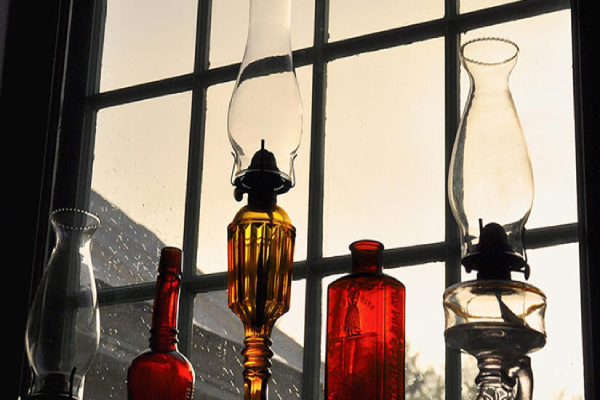
Glass Doctor provides insights on antique glass, covering identification and care.
|
Antique glass is a popular option for home restoration projects. The beauty and imperfections of antique glassware and windows are what make restored historical homes look genuine. Did you know there are several types of antique glass? It can be difficult to distinguish one from another or to identify authentic antiques from modern replicas. Whether you're a collector or you want to DIY your own antique glass, use this guide for help.
Cylinder Glass
Cylinder glass is one type of antique, mouth-blown window glass found in historical buildings dating back to the 1600s. It's also known as wavy glass for the bubbling, undulating imperfections found in the surface of the glass that distort images when you look through it.
The process of creating a pane of cylinder glass involves blowing into a blowpipe with a ball of molten glass on the end while swinging the blowpipe down into a pit until the glass elongates and reaches the desired length and diameter. At this point, the glass resembles a cylinder, which must be cooled, marked, reheated, and flattened into a sheet.
Crown Glass
Crown glass is another option for antique window glass in historic homes. The technique was originally developed as far back as the 7th century, and then later restored as a substitute for cylinder glass.
The method for making crown glass begins by blowing a ball of semi-molten glass to gradually open it outward. The glass blower then transfers the glass to a pontil and flattens it into a disc shape by spinning and heating it. The pontil leaves a signature bullseye center on the glass with concentric rings that distort images when you look through it.
Carnival Glass
Carnival glass is a type of pressed, iridescent glassware treated with metallic spray. Its name stems from the fact that these brightly colored cups, vases, goblets, and plates were often given out as prizes at carnivals.
Fenton is a well-known manufacturer of carnival glass, which dates back to 1908. If you spot the Fenton logo stamped on the bottom, this indicates you have a newer piece of carnival glass. The oldest, most valuable pieces are unmarked.
Depression Glass
Depression glass was a type of mass-produced dinnerware manufactured inexpensively during the 1920s and early 30s. Pieces came in many colors and patterns and ranged from teacups and saucers to salt shakes and pitchers.
Today, depression glass is considered a collectible. You know you've found genuine antique glassware if you see small bubbles throughout the piece, seams in the lid, and lines on the bottom. The glass should also feel thin and delicate, as reproductions are usually much thicker. Depression glass labeled with the word “elegant” refers to American hand-pressed items made from about 1925 to 1955.
Milk Glass
Milk glass dates back to the 16th century, though it was mass produced as late as the 1960s. It's easy to identify this type of antique glassware by its milky white appearance, though older types of milk glass also came in pink, blue, yellow, black, and brown.
Milk glass may be opaque or translucent, blown or pressed, and comes in a wide variety of shapes used for decorative purposes. Genuine milk glass bowls, cups, canisters, vases, and other pieces are considered collectibles, but it's easy to replicate the appearance by spray painting ordinary glass with matte white spray paint.

